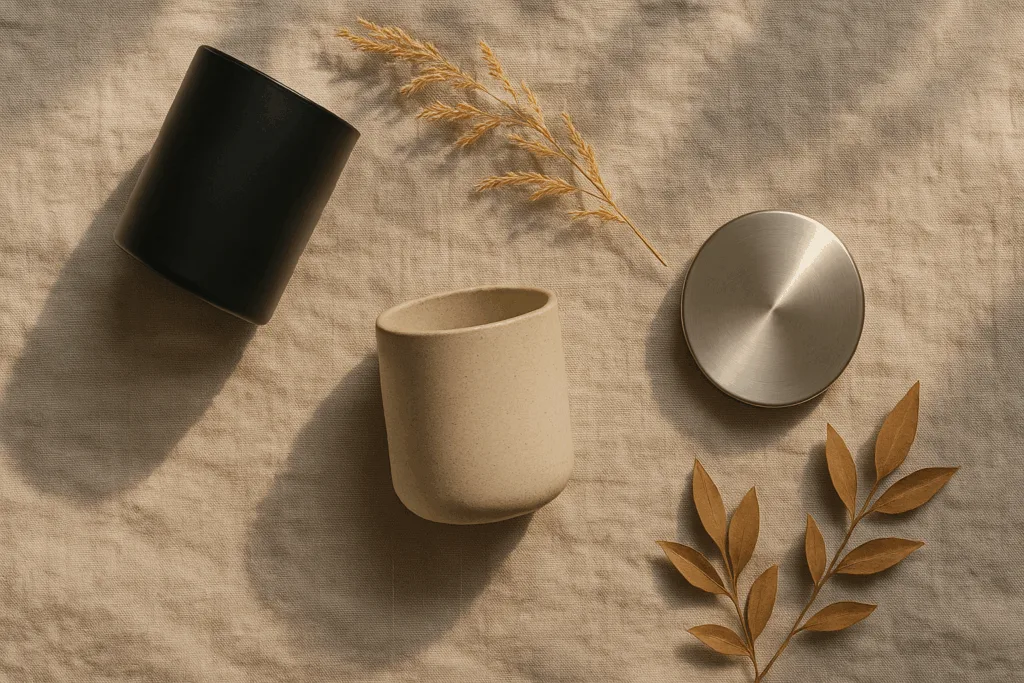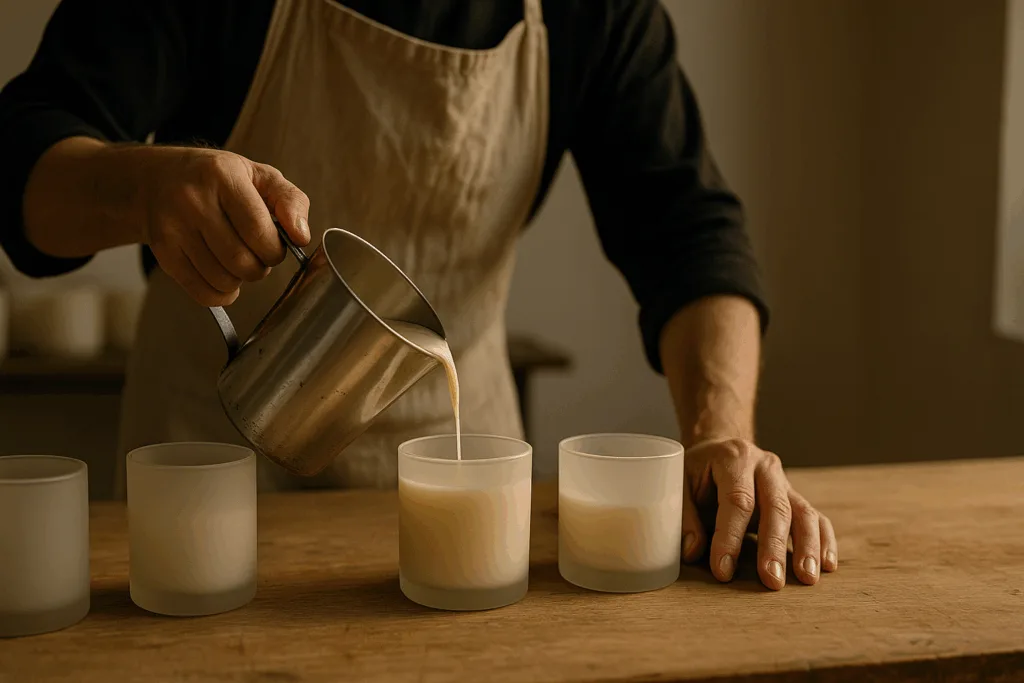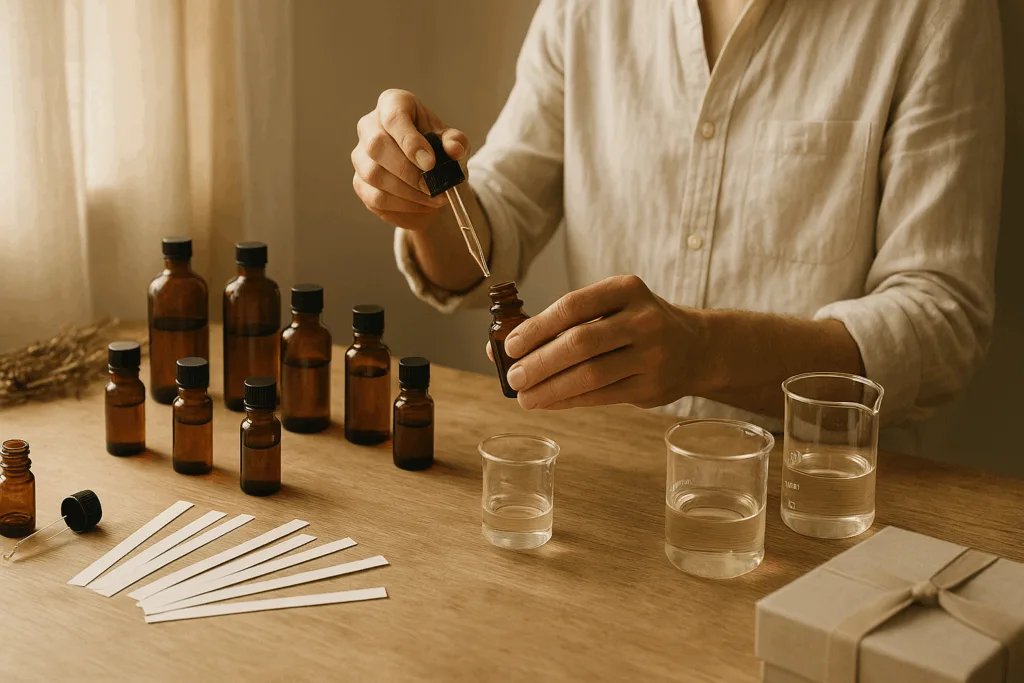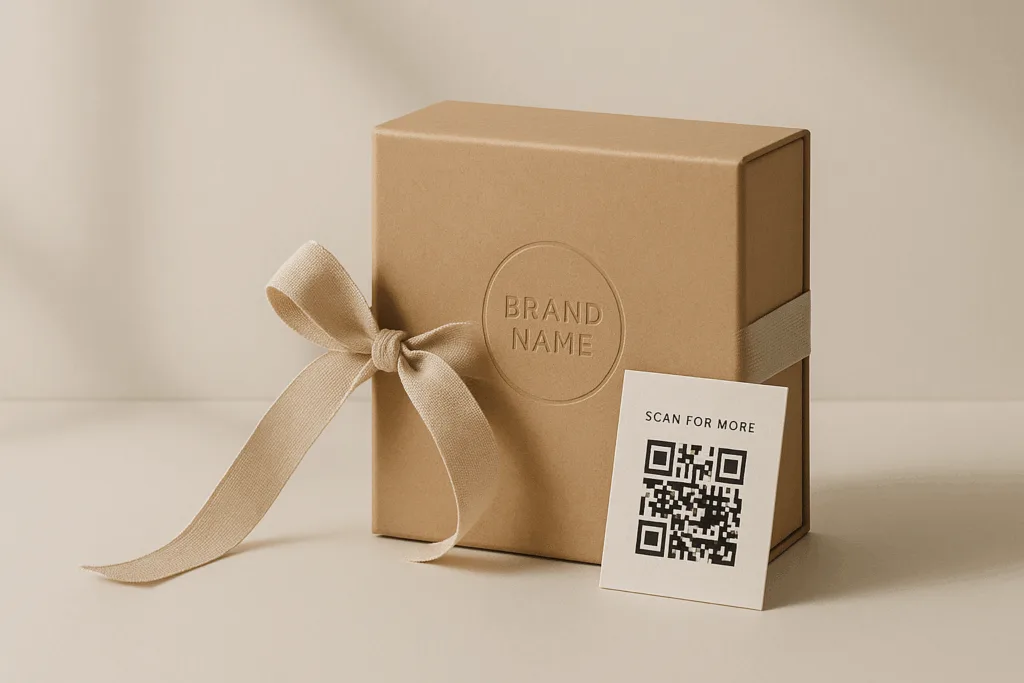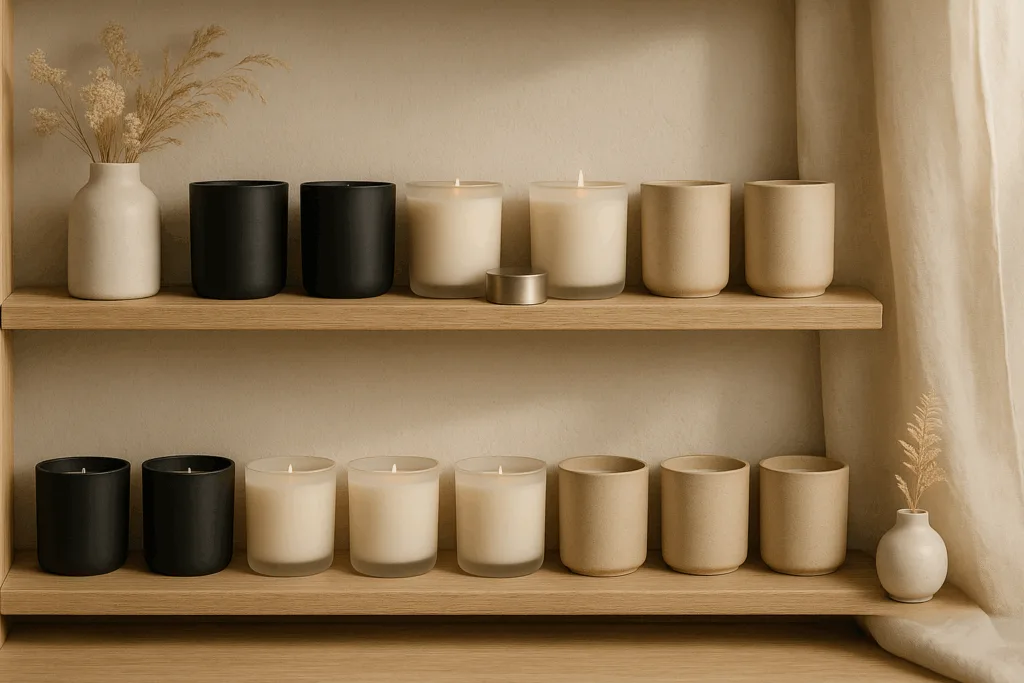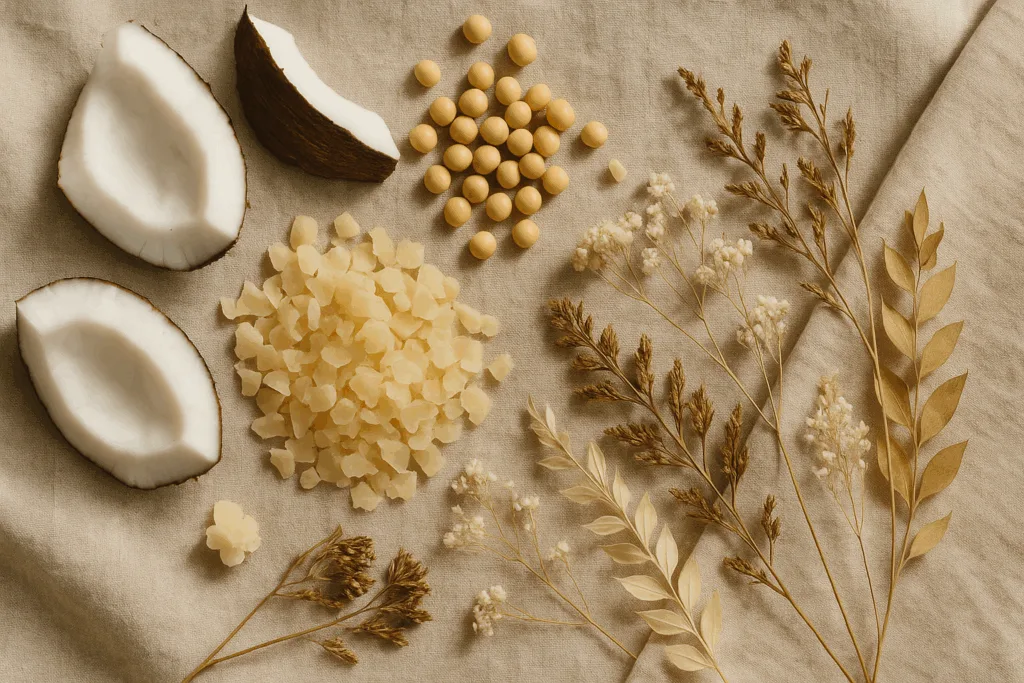This long-form guide is crafted for B2B buyers, private-label brands, and wholesalers seeking a calm, luxurious, nature‑inspired path to market. Within the first 10% of this article, we name our focus clearly: How to Build Your New Brand: 5 Proven Tactics for Private Label Candle Success—a sensorial, sustainable blueprint by Circe Home.
The Art and Strategy Behind Private Label Candle Success
A great candle is a whispered promise: soft light flickering across matte glass, a skin‑warm fragrance diffusing like a memory, and the quiet assurance of quality in the hand. In a category where touch, scent, and glow converge, candles become the most intimate medium for brand expression. For emerging labels and seasoned retailers alike, private label candle success rests on translating ethos into experience—turning values into vessels and stories into scent trails that linger long after the flame is out.
From a strategic lens, candles punch far above their weight. They deliver high perceived value, premium shelf presence, and recurring purchase behavior. They also bridge retail and ritual: a candle transforms spaces and schedules—bath time becomes spa time; a desk becomes a sanctuary. For brand builders, this means every design decision carries compounding effect: wax system, wick gauge, fragrance concentration, jar geometry, label substrate, and unboxing choreography all coauthor the narrative.
Circe Home’s approach pairs artisanal rigor with manufacturing discipline. Our craftspeople temper waxes to precise pour temperatures for glass adhesion and surface polish; our technologists track wick migration and melt‑pool symmetry across multiple burn cycles; our perfumers choreograph note structures for diffusion that feels expansive yet refined. This duality—poetry and procedure—ensures the first impression mirrors the last. In the calm, sustainable cadence of our studio, luxury is engineered for consistency: every batch a chapter, every flicker a signature.
Key takeaways: Private labeling lets you scale brand meaning without building a factory. Success depends on sensory coherence, rigorous testing, and a partner who treats each candle as an ambassador of your values.
Why Candles Are the Fastest Bridge to Brand Affinity
Candles are touchable storytelling. They integrate seamlessly into hospitality, wellness, décor, and gifting, meeting customers during their most receptive moments—winding down, welcoming guests, celebrating milestones. Because scent imprints memory more vividly than sight alone, a candle becomes your brand’s mnemonic device: a waft of neroli recalls your spa; cedar and smoke summon your atelier.
From a commercial view, candles enable agile assortment building. Seasonal capsules, limited‑edition collaborations, and localized scent maps (think: monsoon jasmine for Singapore, alpine pine for Zurich) let you test demand signals with minimal risk. Private label also unlocks packaging differentiation—stoneware for earthy minimalism, electroplated glass for mirrored glamour—positioning your line precisely where your customer aspires to be.
The operational advantages are equally compelling. With the right partner, you can move from concept to shelf in 8–12 weeks, sync inventory with retail calendars, and build replenishment rhythms that protect working capital. In short, candles are the quickest way to plant a sensory flag for a new brand—luxury you can hold, fragrance you can remember, sustainability you can trust.
Market Outlook: Luxury Home Fragrance Trends and Demand
The home fragrance category has matured from décor accessory to lifestyle essential. Consumers seek serenity and ritualization at home, and candles sit at the heart of that demand. Growth is fueled by three converging trends: premiumization (willingness to pay for complex, long‑lasting scents), wellness (aromatherapeutic narratives), and design integration (vessels as sculptural objects). For private labels, this means room to differentiate through story and substance, not price alone.
Retail channels are diversifying. DTC remains strong for narrative‑rich launches; boutiques and concept stores drive discovery; hospitality and spa channels anchor credibility; marketplaces expand reach when managed with brand‑first imagery and copy. Internationally, fragrance preferences are subtly regional: airy citrus‑herbals in coastal climates, resinous woods and spice in cooler zones, white florals and tea notes in humid regions. A balanced library respects these nuances while preserving your brand’s voice.
Sustainability is not a feature—it’s a filter. Eco‑waxes, phthalate‑free perfume compositions, and recyclable or refillable packaging now frame the definition of luxury. Brands that can evidence responsible sourcing and measurable impact earn both shelf space and customer trust. As you build your new brand, anchor growth in materials and methods you’re proud to scale.
Sustainability as a Growth Engine in Private Labels
Sustainability amplifies desirability when it’s woven into performance. A biodegradable wax system that also throws beautifully; a lead‑free wick that yields a stable, centered flame; a glass that is both recycled and refractory‑sound—these are the intersections where eco‑credentials convert to loyalty. Circularity can be designed in: standardized vessels for refill programs, ship‑flat secondary packaging, and take‑back schemes for key accounts. Each choice lowers footprint and tells a richer story.
For B2B buyers, ask your manufacturer: What portion of inputs are certified (FSC paper, RSPO‑free, IFRA‑compliant fragrance)? How do they audit suppliers? What is the defect rate, and how are rejects responsibly handled? At Circe Home, sustainability is operational: optimized batch yields reduce waste, closed‑loop cleaning conserves water, and local sourcing where feasible shortens transit. Eco‑luxury isn’t an aesthetic—it’s an ethic, felt in the quiet, confident burn of every candle.
Wax Architecture: Soy, Coconut, Beeswax, Blends
Choosing the right wax is both science and storytelling. Each substrate carries tactile cues (creamy, glassy, satin), thermal behavior (melt point, contraction), and olfactory dynamics (fragrance solubility, hot throw). Below is a concise comparison to guide selection:
| Wax Type | Sensory Character | Performance | Sustainability Notes | Best For |
| Soy | Velvety surface, soft white hue | Clean burn, moderate hot throw, good adhesion | Renewable, biodegradable | Natural/minimalist lines |
| Coconut | Creamy appearance, slow melt | Excellent hot/cold throw, long burn | High yield per acre, blends well | Luxury collections |
| Beeswax | Honey‑gold glow, subtle aroma | Firm structure, bright flame | Natural, supports apiculture | Heritage/artisanal |
| Blends | Tunable texture and sheen | Custom melt pool and throw | Engineered for performance + eco goals | Scalable private labels |
Pro tip: For large jars (>300 g), consider a coconut‑soy blend for superior glass adhesion and throw; for tins or travel sizes, a soy‑heavy system ensures stability across temperature swings.
Wick Science: Cotton, Wood, and Core Stability
The wick is the engine of the candle. Its gauge, braid, and core influence flame height, soot, and melt pool geometry.
| Wick Type | Experience | Technical Notes | Best Pairings |
| Cotton (flat/paper core) | Familiar, quiet burn | Broad size range, easy tuning | Soy, soy‑coconut blends |
| Wooden (single/crackle) | Soft crackle, modern vibe | Needs precise diameters and jars | Coconut blends, wide vessels |
| Cotton‑stabilized | Consistent flame, low mushrooming | Helpful for heavy fragrance loads | High‑oil blends, colored wax |
Testing cadence: Burn to 10% depth, rest, then reburn across 3 cycles. Evaluate flame stability, wall adhesion, and soot index. Circe Home logs results lot‑by‑lot to lock in repeatability.
Vessels & Lids: Glass, Tin, Stoneware
Vessel selection merges brand language with thermal safety. Thick‑wall glass offers thermal mass and premium heft; tins travel well and read utility‑chic; stoneware signals artisan design and supports refill models. Lids complete the ritual—wood for warmth, metal for polish, ceramic for continuity. Consider:
- Thermal tolerance: Choose vessels tested for hot shock and annealing integrity.
- Finish durability: Frosted and matte coatings should resist fingerprinting and cleaner abrasion.
- Refill readiness: Straight‑sided interiors simplify wax release for refills.
Label substrates: uncoated cotton papers for a tactile, nature‑inspired feel; foil accents for quiet luxury; waterproof synthetics for bathroom or spa settings.
Fragrance Systems: Essential Oils vs. Aroma Chemicals
A refined fragrance often blends naturals with safe, IFRA‑compliant aroma molecules. Essential oils deliver botanical authenticity; aroma chemicals add lift, longevity, and stability under heat. The art is balance: neroli brightened with citrus aldehydes; sandalwood enriched with lactones; jasmine tinted with tea facets. Our perfumers build for throw without harshness, ensuring the hot aroma feels like warm light—expansive, never overwhelming.
Load guidance: 6–10% for most systems; higher loads require wick recalibration. Always validate against regulatory limits for dermal allergens if extending the line to diffusers or body care.
From Brief to Burn Test: Our End‑to‑End Workflow
Circe Home’s process translates vision into ritual‑worthy product:
- Discovery & Brand Map — Values, target archetypes, interior aesthetics.
- Fragrance Direction — Mood boards → accords → sample set (3–5 options per brief).
- Material Spec — Wax system, wick shortlist, vessel + finish, label substrates.
- Prototype Pour — Controlled batches with pour‑temp curves for glass adhesion.
- Burn Lab — Multi‑cycle tests, soot index, tunneling risk, self‑extinguish check.
- Regulatory Dossier — IFRA conformity, CLP/GHS labeling data, SDS packets.
- Packaging Build — Box die‑lines, inserts, emboss/foil, recycled board specs.
- Pilot Run — 100–300 units to validate scale behavior and QA checkpoints.
- Production & QC — Batch records, sensory sign‑off, AQL sampling.
- Fulfillment — Palletization, ISTA‑minded packout, global freight coordination.
The result is a candle that feels inevitable—as if it always belonged to your brand.
Sampling, Iteration, and Approvals for B2B Buyers
Sampling is where imagination meets evidence. We ship curated kits that bracket your preferred profile: a brighter citrus lift, a deeper resin base, a softer floral heart. Stakeholders evaluate cold/hot throw in real spaces—lobby, treatment room, boutique nook—because context matters. Iterations tweak note ratios, wick gauges, and dye loads. Approvals include signed retains and a documented spec so every reorder mirrors the approved sensory signature. Timelines stay crisp when feedback is consolidated; we provide checklists to streamline internal reviews across merchandising, operations, and brand.
Brand Values → Scent Language Mapping (Tactic 1)
Define the essence before you define the SKU. Map brand pillars to olfactive families:
- Calm & Mindful: lavender, chamomile, clary sage, tea.
- Earth & Heritage: oakmoss, vetiver, labdanum, tobacco leaf.
- Coast & Clarity: sea salt, driftwood, white tea, citrus.
- Luxe & Nocturne: oud, amber, tonka, black pepper.
Create 3–5 core SKUs that span dayparts: morning clarity (citrus‑herbal), afternoon focus (green tea‑fig), evening unwind (sandalwood‑vanilla), and a signature halo (amber‑musk). Ensure naming, colorways, and copy sing the same melody—nature‑inspired, calm, sustainable.
Outcome: Customers don’t just buy a candle; they choose a mood you consistently deliver.
The Psychology of Scent in Positioning (Tactic 1, cont.)
Scent bypasses rational filters, reaching the limbic system where emotion and memory reside. Use this to position effectively:
- Wellness verticals: lean into lavender, eucalyptus, neroli—framed as ritual care.
- Fashion/luxury: resinous woods, spices, and musks for after‑dark allure.
- Hospitality: clean tea, linen, and citrus for universal, welcoming clarity.
Keep copy sensory and textural: silky coconut wax pools like cream; cedar blooms into amber warmth; the flame sketches gold across stoneware. Your brand becomes an atmosphere customers crave.
What to Demand from a Private Label Manufacturer (Tactic 2)
Your partner should offer transparency, control, and creativity. Non‑negotiables:
- Documentation: IFRA statements, SDS, batch records, allergen disclosures.
- QA System: AQL sampling, corrective actions, lot traceability.
- Scaling Proof: Case studies from 100‑unit pilots to 10,000‑unit runs.
- Design Support: dielines, prepress checks, color proofs, print management.
- Service: Dedicated PM, clear SLAs, proactive risk mitigation.
Circe Home operates as an extension of your team: responsive, meticulous, and calm under deadlines—because luxury should feel effortless on your end.
Quality Control, Compliance, and Testing Protocols (Tactic 2, cont.)
Testing turns aspiration into reliability. Our burn lab validates:
- Flame Stability: no flicker spikes, controlled height.
- Melt Pool Geometry: full, even pool by second or third burn.
- Soot Index: under thresholds on white‑box tests.
- Self‑Extinguish Behavior: safe end‑of‑life performance.
Compliance: IFRA conformance, CLP/GHS hazard labeling where required, Prop‑65 awareness for relevant markets, and multilingual safety stickers. Your brand stays elegant and compliant.
Building a Cohesive Fragrance Library (Tactic 3)
Treat your assortment like a capsule wardrobe—fewer pieces, perfect fits. Anchor with four core scents, then layer seasonal drops: spring tea‑citrus, summer fig‑herb, autumn smoke‑spice, winter resin‑pine. Maintain through‑lines (shared musks or woods) so the collection reads as one voice. Extend to reed diffusers and room sprays with adjusted concentration curves to preserve character across formats. Document accord maps so future collaborations sync with the established DNA.
Note Architecture: Top/Heart/Base Balancing (Tactic 3, cont.)
A compelling candle evolves across hours:
- Top: bright entrance (bergamot, grapefruit, aldehydes).
- Heart: texture and tone (rose, jasmine, cardamom, tea).
- Base: memory and warmth (sandalwood, musk, amber, tonka).
Performance cues: If cold throw excites but hot throw feels thin, enrich the base with warm woody molecules; if hot throw overwhelms, dial back high‑impact top notes and increase lactonic smoothers. Every adjustment touches wicking—iterate as a system, not in isolation.
Eco‑Luxury Packaging and Refill Systems (Tactic 4)
Packaging is the tactile overture. Choose FSC‑certified boards, water‑based inks, and minimalist dielines that ship flat. Design for refills: straight‑sided vessels; fragrance cards with QR refill links; loyalty programs that reward returnable glass. Use textures that echo nature—uncoated cotton paper, linen ribbons, wooden lids—and keep palettes calm: stone, clay, charcoal, dune. The unboxing should exhale rather than shout; luxury lives in quiet details.
Comparison: Secondary Packaging Options
| Material | Look & Feel | Eco Profile | Use Case |
| Kraft Board | Warm, tactile, rustic‑lux | High recycled content | Eco‑led lines |
| Rigid Box | Sculptural, gift‑ready | Recyclable if mono‑material | Premium gifting |
| Collapsible Rigid | Luxe yet flat‑ship | Lower freight footprint | DTC efficiency |
2025 Private Label Design Aesthetics (Tactic 4, cont.)
- Earth‑hewn minimalism: stone textures, sand tones, serif micro‑typography.
- Mirror metals: soft gold lids, pewter accents for restrained glamour.
- Typography as scent cue: light weights for airy citrus; bold small caps for woods.
- Smart labels: QR storytelling—provenance, playlist, care ritual.
- Shelf systems: consistent heights and color bands for fast planogramming.
These choices create coherence across wholesale walls and digital grids, helping customers recognize your brand from across the room—or a scrolling screen.
Wholesale, DTC, and Marketplace Rollouts (Tactic 5)
Launch with intentional channel choreography:
- DTC First‑Light: website drop to capture early adopters and feedback.
- Wholesale Anchors: partner with boutiques and spas for credibility and scale.
- Marketplaces (curated): list hero SKUs with strict imagery/copy control.
Inventory guardrails: start with conservative MOQs, then stage POs by scent velocity. Offer retailer testers and minis to accelerate sell‑through. For B2B, Circe Home supports white‑label collateral and drop‑ship trials to reduce onboarding friction.
Sensory Storytelling and Content Strategy (Tactic 5, cont.)
Because screens can’t transmit scent, your words and visuals must. Pair photography in warm, directional light with copy that names textures: silken wax, amber glow, linen‑soft smoke. Share process clips—pouring, wicking, boxing—to humanize quality. Encourage UGC with rituals: #SundayReset, #EveningUnwind. Email flows should be paced like a breath: exhale (story), inhale (offer). Remember: consistency builds the memory palace your customer returns to.
Boutique Spa Revenue Lift with Signature Scent (Case Study)
A coastal spa sought differentiation in a crowded wellness corridor. Circe Home translated their brand brief—“salt air, white towels, eucalyptus steam”—into a signature sea salt • eucalyptus • white tea blend. We selected frosted straight‑sides with sand‑tone labels and wooden lids, aligning with their beach‑stone interiors. The launch kit included retail sizes, treatment‑room testers, and minis for turndown service. Result: a 38% increase in retail basket size within three months, plus wholesale inquiries from neighboring hotels. The candle became a scent postcard—guests carried the spa’s atmosphere home and kept returning to refill the feeling.
Concept Store Collab: Limited Drops and MOQs (Case Study)
An urban concept store wanted seasonal, gallery‑grade objects without heavy risk. We proposed a quarterly limited drop—small MOQs, artful sleeves by local illustrators, and a shared charity component. The first release, ink fig • black tea • cedar, shipped in matte black glass with cream letterpress wraps. Sell‑through hit 92% in four weeks. Because specs were standardized, reorders required no reformulation. The model proved that scarcity, story, and sustainable specs can harmonize into margin‑rich retail theater.
Ethical Sourcing, Carbon‑Lite Operations, Recyclability (Sustainability)
Sustainability is craftsmanship extended to the planet. Circe Home vets suppliers for traceability, invests in efficient batch yields to minimize waste, and chooses regional inputs when practical to shorten freight. Our fragrance houses provide IFRA‑compliant compounds; our wicks are lead‑free; our papers are FSC‑certified. We design for disassembly so components can be properly recycled. Luxury, to us, is the quiet of knowing we’ve done the right thing—felt in the serene steadiness of the flame.
Circular Design: Reuse, Refills, and Return Programs (Sustainability, cont.)
Build rituals of return. Standardize jar geometries to support wax refill inserts. Offer postal‑safe return kits for glass in key markets. Reward loyalty with refill discounts and vessel engraving. In hospitality, align refills with housekeeping schedules to minimize waste. Circularity becomes a storyline customers love to retell—proof that elegance and responsibility can be the same gesture.
Scent Memory, Ritual, and Lifestyle Alignment (Consumer Appeal)
Candles choreograph daily transitions: dawn clarity, afternoon focus, twilight exhale. Map your scents to these micro‑moments so customers collect across use cases. Position your brand as a companion to interiors—textures and tones that harmonize with oak tables, linen sofas, stone baths. When your candle feels inevitable within a space, repurchase becomes reflex.
Merch tips: Nest your candles with throws and ceramics; create trio stories (Morning/Noon/Night); gift‑wrap with calming neutral papers and seeded cards that plant wildflowers—a tangible extension of your nature‑inspired promise.
Forecasting, MOQs, Lead Times, and Scalability (Operations)
Start with a 3‑month forecast keyed to launch plus 1 restock. Track velocity by scent and channel, then rebalance mix. Typical lead times: development 3–5 weeks; sampling 2 weeks; production 4–6 weeks depending on complexity and queue. MOQs vary by vessel finish and print method; standardized specs reduce MOQs and accelerate reorders. Circe Home’s capacity planning ensures boutique agility today and wholesale readiness tomorrow.
IFRA, CLP/GHS, and Labeling Best Practices (Risk & Compliance)
Regulatory clarity protects customers and brand equity. Maintain documentation for IFRA categories, SDS, and allergen declarations. For EU/UK, implement CLP/GHS hazard labeling where applicable; for US, include safety statements and fire safety icons. Train staff on compliant copy so romance never undermines responsibility. Circe Home packages compliance into easy dossiers for your records and retailer onboarding.
Costing Models, Margins, and Price Strategy (Financials)
Build prices from the bill of materials plus labor, overhead, and freight. Target keystone or better at retail (2.2–2.6x landed cost) with room for promotions. For wholesale, preserve 45–55% gross margin via thoughtful spec choices (label vs. direct print, stock vs. custom glass, mono‑material boxes). Offer good‑better‑best tiers to widen the funnel without diluting the brand voice.
Palletization, Export Docs, and Global Fulfillment (Logistics)
Candles are fragile yet freight‑friendly with smart packouts: corrugated shipper partitions, top/bottom cushions, and pallet corners. For export, prepare commercial invoices, packing lists, and HS codes by market; coordinate ISF for US imports and ensure fumigation docs where wood is involved. We book carriers experienced with cosmetics/home fragrance to minimize claims. Your product arrives calm, pristine, and ready to glow.
FAQ: Private Label Candles & Brand Building
What are the essential steps to private label candle success?
Define brand essence, build a tight fragrance library, specify materials (wax/wick/vessel) that match your positioning, design eco‑lux packaging, and launch with a channel plan that protects margins while telling a sensory story.
How do I start if I’m new—How to Build Your New Brand: 5 Proven Tactics for Private Label Candle Success?
Begin with a brand map and mood boards, then brief Circe Home. We’ll translate that blueprint into samples, test them with your team, finalize specs, and produce a pilot run you can proudly present to buyers.
Can Circe Home match or reinterpret an existing scent?
Yes. We can replicate with fidelity or modernize for better throw and compliance, always supplying IFRA and SDS documentation for your records.
What MOQs and timelines should I expect?
Pilots can start around 100–300 units per SKU, with production lead times averaging 4–6 weeks after approvals. Custom vessels or complex finishes may extend timelines; standardized specs speed everything up.
How can packaging support sustainability without losing luxury?
Choose FSC boards, water‑based inks, mono‑material structures, and refill‑ready vessels. Luxury shows up in restraint—tactile papers, precise foils, and thoughtful unboxing choreography.
How do I market online if customers can’t smell the candle?
Lean into sensory copy and warm, directional visuals. Share process clips, rituals, and playlists. Encourage reviews that speak to mood: calm, focus, warmth. Bundle products by moment (Morning/Noon/Night) to cue use cases.
Where does “How to Build Your New Brand: 5 Proven Tactics for Private Label Candle Success” fit into my investor pitch?
Use it as your operating thesis: a structured plan that shows you can turn brand values into scalable, margin‑rich products with sustainable specs and disciplined logistics.
Conclusion & Call to Action: Partner with Circe Home to Build Your New Brand
To craft a candle is to choreograph calm—scent lifting like dawn mist, wax pooling like cream, light sketching warmth across stone and linen. When you root design in nature‑inspired materials and sustainable practices, you build more than a SKU—you build trust.
If your next chapter is How to Build Your New Brand: 5 Proven Tactics for Private Label Candle Success, Circe Home is your calm, luxurious, sustainable partner from brief to burn. Together we’ll compose a collection that feels inevitable in your customer’s home—and unforgettable in their memory.
Let’s begin. Share your brand map, and we’ll send your first sample kit.

